Five tips to keep aquatic invaders at bay
ON 10-10-2025
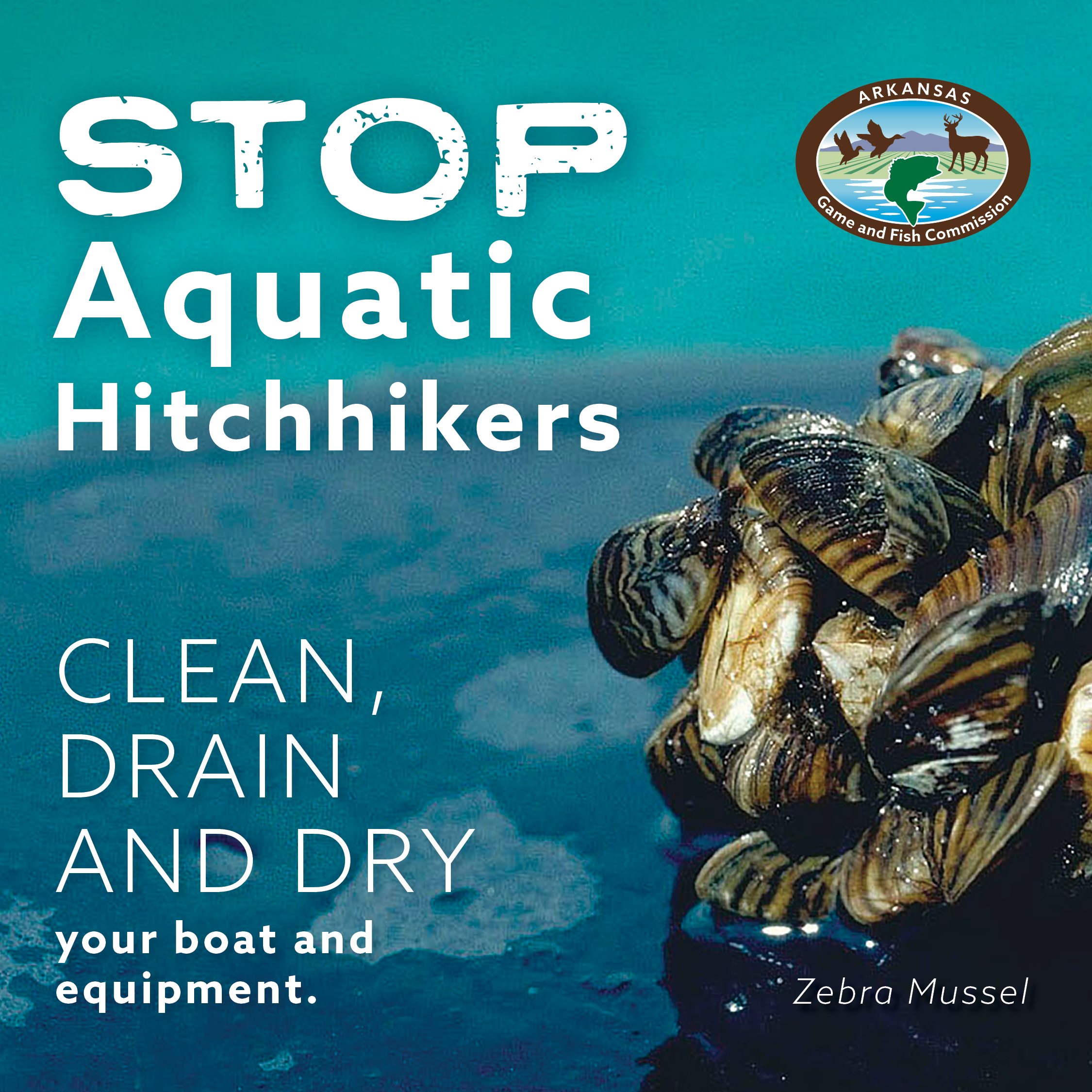
LITTLE ROCK — Fall boating can mean peaceful days on Arkansas’s large reservoirs while many hunters begin to hit the woods instead of the water. Even with fewer boaters on the water, the threat of aquatic nuisance species infiltrating your favorite lake remains.
Aquatic nuisance species are non-native plants and animals that can cause ecological or economic harm, or even harm to human health if introduced to a body of water. These species rarely have any natural predator or environmental conditions to limit their growth and survival, which can allow them to establish, spread and outcompete native species for food or habitat that they need to survive. Aquatic nuisance species account for more than $120 billion in damage each year in the U.S. They’re most known for blocking boat access to recreation or, in the case of silver carp, causing hazardous conditions for boaters. But these species cause much more damage than that. Zebra mussels can completely clog water intake structures and affect public water supplies, power generation and many other industries. Invasive plants like giant salvinia can completely smother the shallow portions of lakes, choking out all life and blocking user access. Invasive carp species like silver carp do more than just jump from the water and cause hazards, they feed on plankton, which forms the base of the lake’s food chain. Left unchecked, they can limit growth and survival of other fish species.
Matt Horton, the AGFC’s Aquatic Nuisance Species program coordinator, says 36 aquatic nuisance species have been documented in Arkansas, including plants, fish, mussels, snails and other types of organisms.
“Louisiana spends millions of dollars each year fighting giant salvinia, a plant that the AGFC has been fighting in south Arkansas lakes,” Horton said. “Millions more are spent on other aquatic invaders. That money is being taken away from habitat management, stocking and improving fisheries for anglers.
Horton says the old adage that an ounce of prevention is worth a pound of cure definitely holds true when it comes to aquatic nuisance species. Once a species has become established in a body of water, it can be nearly impossible to completely remove it. Here are a few things every boater and angler should keep in mind as they head to the water this fall.
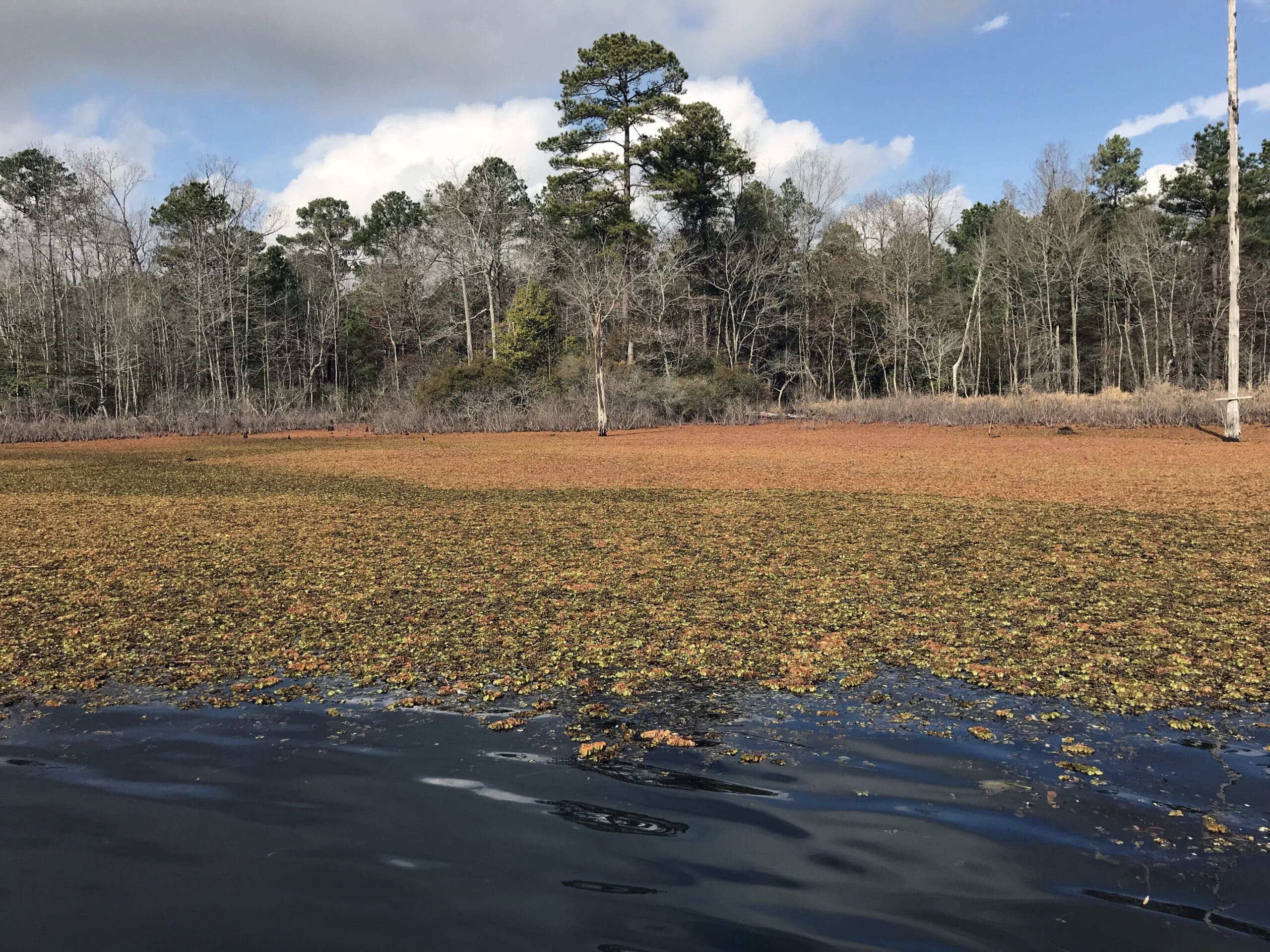
Clean, Drain and Dry
Invasive species are commonly spread through unintentional introductions when they hitch a ride on a boat, motor, trailer or fishing and hunting equipment.
“Anything that contacts the water can be a vector for the spread of these different organisms,” Horton said. “Most invasive plant species spread by tiny fragments of the plant. It only takes a seed or tiny fragment of the plant to infest and rapidly take over an entire water body.”
Before and after your trip, inspect your boat, trailer and gear and remove any vegetation or mud. Use a pressure washer to clean any nasties that hitch a ride on your rig. Spray down the boat, motor and trailer, paying particular attention to the area around the trailer bunks and axles, as they can grab vegetation at the ramp and tote it unseen until you get to a new water body.
Drain all water from your boat and livewell and allow all gear to dry, preferably for five days, but wiping down wet surfaces with a towel works too, which will help kill some of the culprits that may be unseen.
Pull the Plug
According to Arkansas law, all drain plugs must be removed from your boat at the boat ramp upon the conclusion of your outing and during transport. This includes bilge drains, cooler compartments, baitwells and livewells. Viruses, as well as small bits of vegetation and invasive zebra mussel larvae, can hide in the plumbing of your rig.
Anglers who want to keep their catch fresh on a long drive home are better served to cover fish in a dry livewell with ice. Not only are you preventing the spread of invasive species, but the fish will actually be easier to clean and less likely to spoil than if they were toted home in lukewarm water.
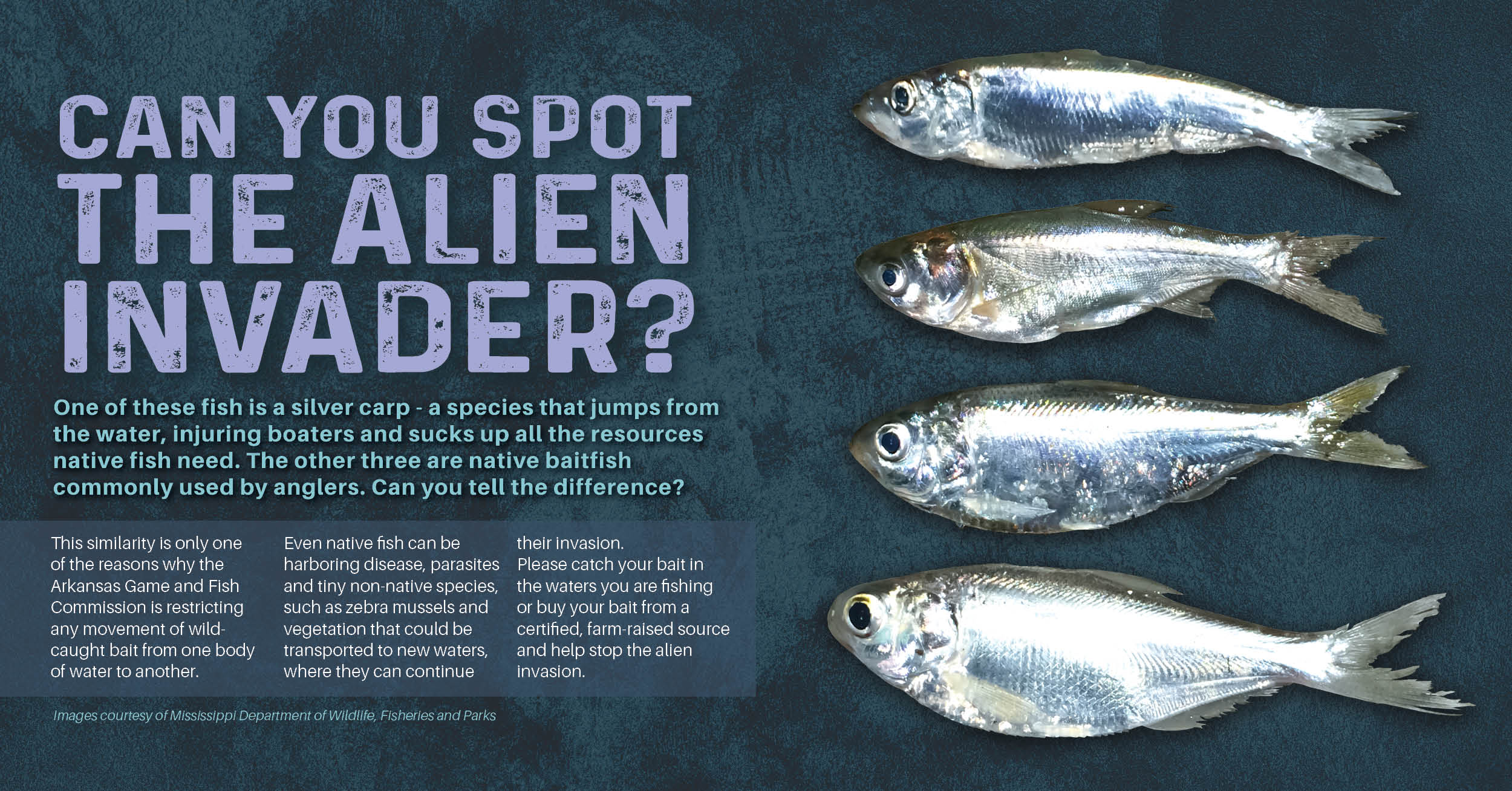
Leave the Bait Behind
Live bait is the best way to ensure a bite when you take a fishing trip, but those minnows you’re using may not be minnows after all. The water they are in also could harbor pathogens or bits of harmful aquatic plants that aren’t native to the lake or stream where you are fishing. Because of this, AGFC prohibits movement of live-caught bait, including crayfish, between bodies of water. Any live bait used must either be purchased from a certified bait provider or come from the body of water where you are fishing. Young invasive carp, such as silver and bighead carp, for instance can look very similar to shad, a native baitfish preferred by anglers targeting striped bass. Also dump unused baitfish on the shore or in the trash where they cannot find their way back into the water. It may seem like a waste, but accidentally introducing invasive species to the water is much more devastating.
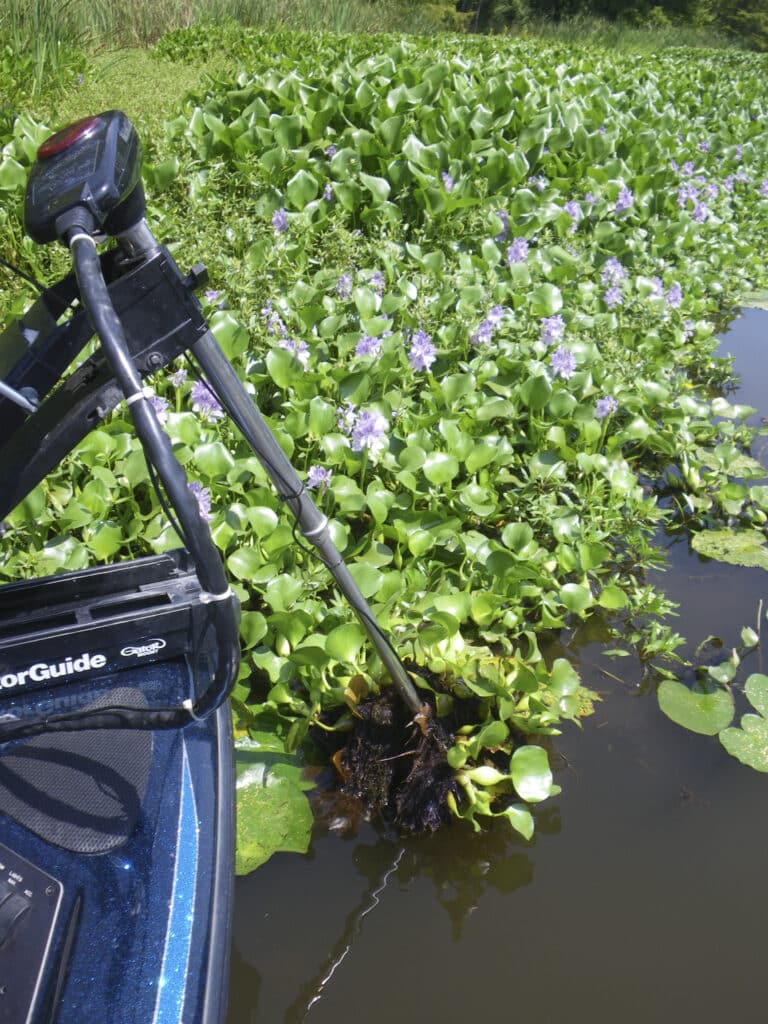
Observe and Report
Anglers and other boaters can help protect the health of our reservoirs by knowing what to look for and letting the AGFC know as soon as they spot a possible invasive species.
“The sooner we find out about a new sighting, the faster we can act to contain and hopefully eradicate it,” Horton said. “Some plants, like giant salvinia, can double in size in less than a week with the right conditions. Waiting until it becomes a problem isn’t an option.”
Visit www.agfc.com/ans to take a look at what aquatic nuisance species have been reported in Arkansas and report any sightings. Include a picture of the organism, GPS coordinates if possible, name of the waterbody, and contact information so Horton or another member of the AGFC can follow up with the sighting.
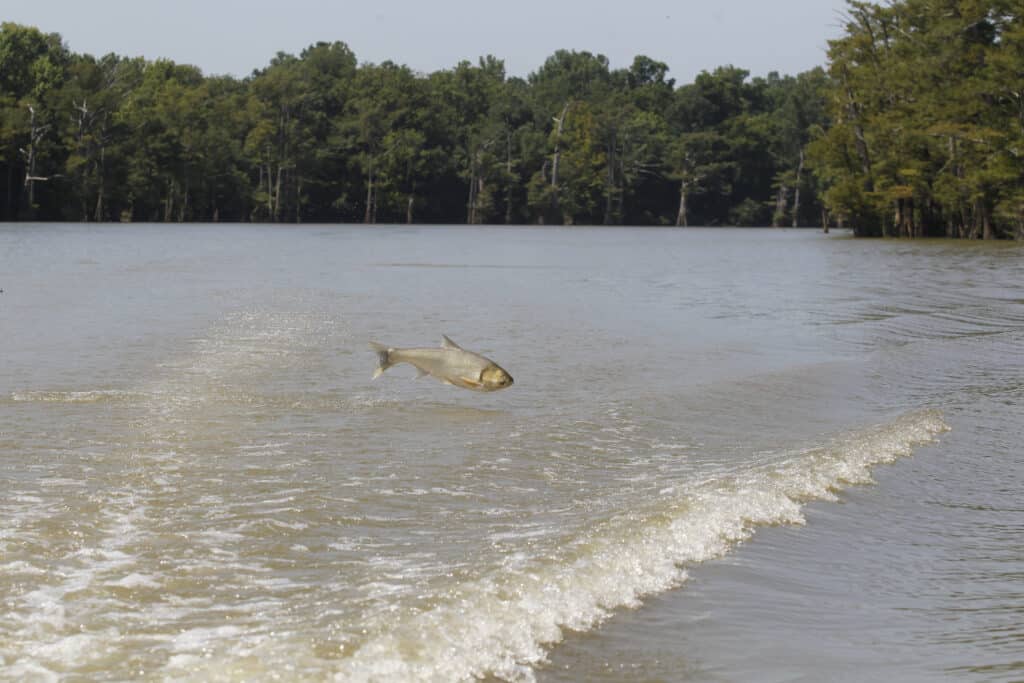
Don’t Move a Menace
Some anglers may bring fish from one lake to another, either deciding to release them on the way home instead of cleaning them, or intentionally “stocking” fish they want to see in bodies of water closer to home. Both instances are illegal and can have disastrous consequences. North Carolina, South Carolina, Georgia, Tennessee, Virginia, Texas, and California are currently battling encroachments of the Alabama bass that is native to the Coosa River Chain that began with angler introductions. These fish are known to be aggressive and put up a good fight, but they’re overtaking the native smallmouth and largemouth bass in their new homes, ultimately hurting the fishery and actually reducing the overall size of fish being weighed in by some of the very anglers who illegally introduced them.
Learn more about how you can help protect Arkansas waters from aquatic invaders at www.agfc.com/ans.
####
CUTLINES:
MUSSELS
Zebra mussels smother native mussels and other organisms as well as clog the intakes of water pumps and coat the surfaces of boat ramps and infrastructure under the waterline.
SHORELINE SALVINIA
Giant salvinia doubles in size each week during the summer, quickly choking out boating access and native fish habitat.
ALIEN INVADER
Although slightly different, a silver carp fingerling looks strikingly similar to native shad species, and can be accidentally introduced to a new body of water if people transport wild-caught live bait from one lake to another.
TROLLING MOTOR HYACINTH
Water hyacinth may look pretty, but it quickly becomes a nuisance, clogging up waterways and making boat travel nearly impossible.
JUMPING CARP
Of the four species of invasive carp threatening Arkansas waters, the silver carp has gotten the most notoriety from its tendency to jump out of the water when startled and causing injuries to boaters.
Recent News
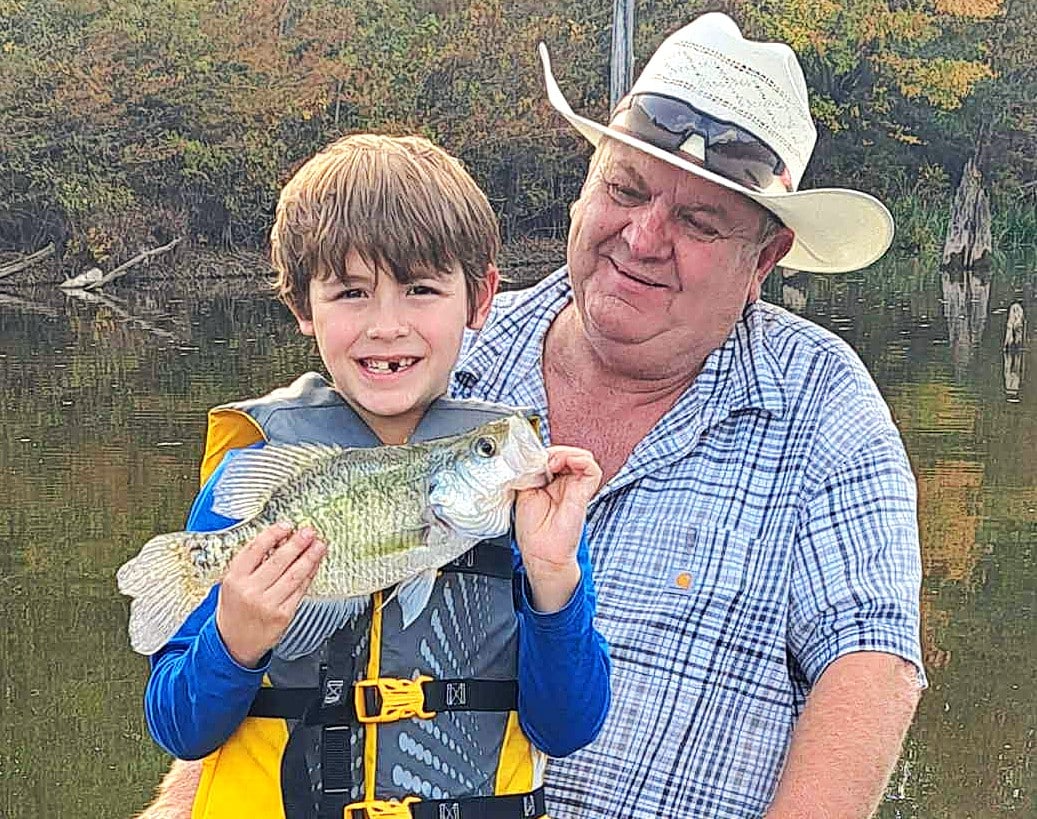
Arkansas Wildlife Weekly Fishing Report
Dec. 4, 2025
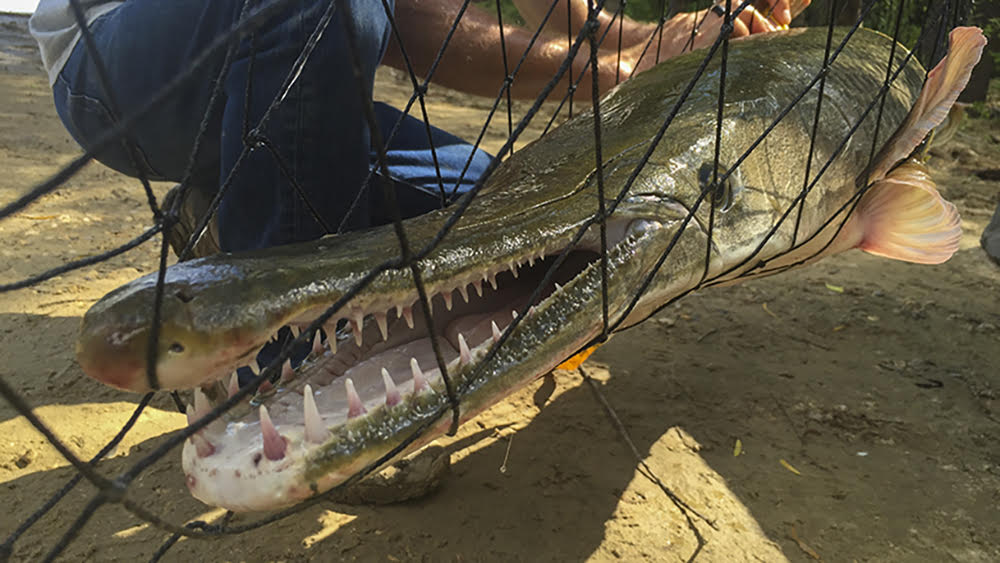
Apply for a 2026 Alligator Gar Trophy Tag
Dec. 4, 2025
Subscribe to Our Weekly Newsletter E-mails
Don’t miss another issue. Sign up now to receive the AGFC Wildlife Weekly Newsletter in your mailbox every Wednesday afternoon (Waterfowl Reports are published weekly during waterfowl season and periodically outside the season). Fishing Reports arrive on Thursdays. Fill in the following fields and hit submit. Thanks, and welcome!
